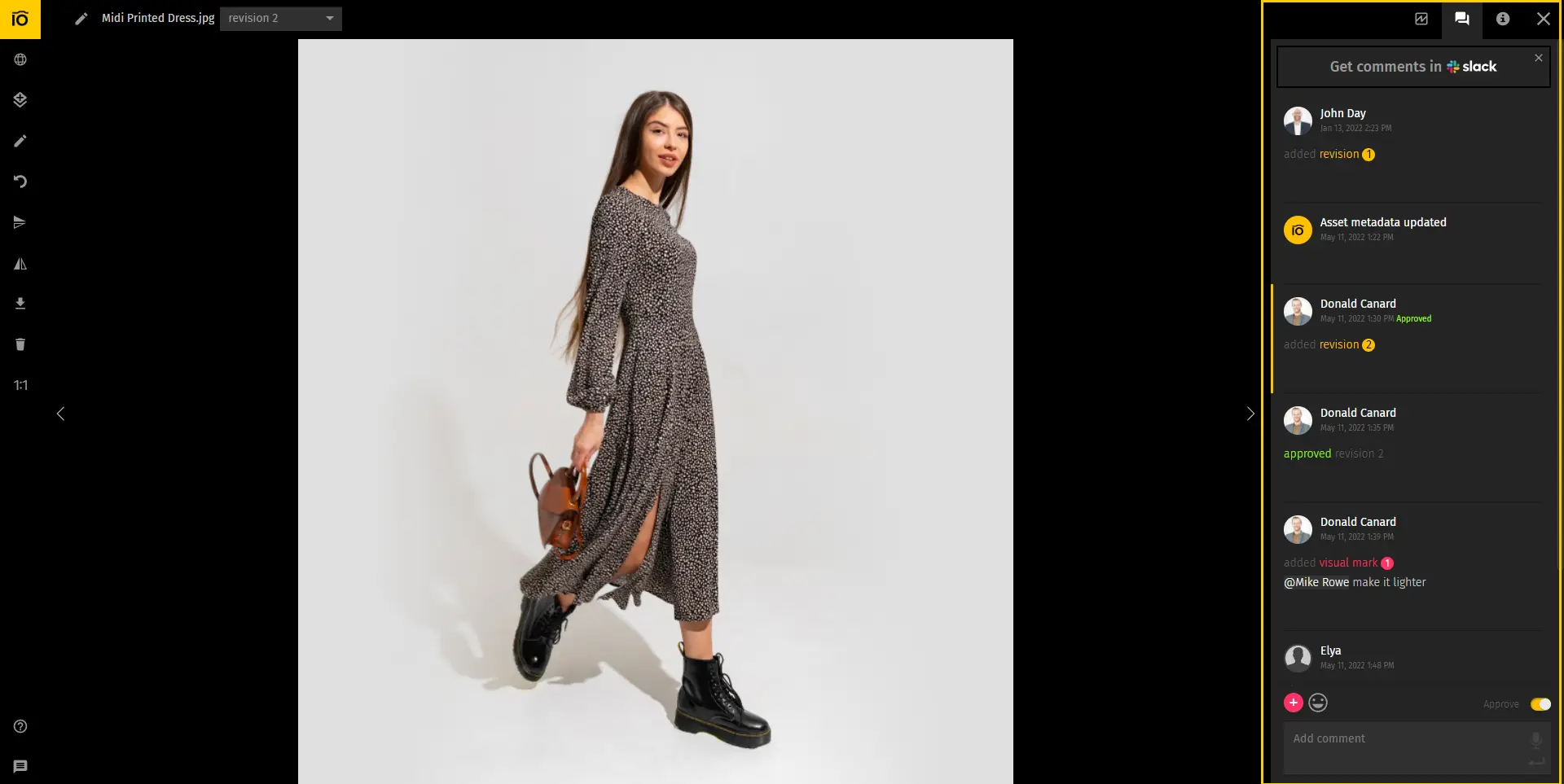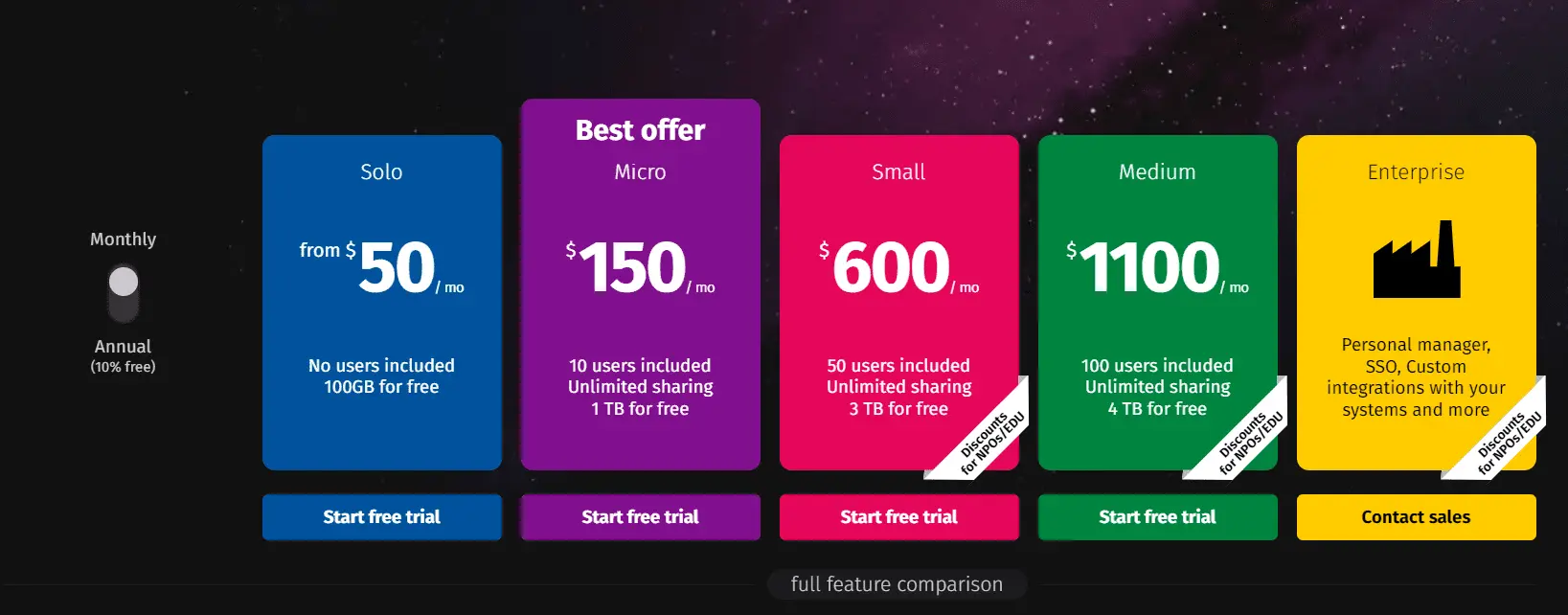In this article, you’ll learn:
What is Media Asset Management
Media Asset Management (MAM) defines both the software solution and the processes for maintenance, storage, and sharing of video and other multimedia files.
Keep in mind, however, that MAM software isn’t magic. There isn’t a single button to fix improper processes or chaotic library structure. However, if you have an idea of an ideal workflow, MAM gives you the tools to turn that vision into reality.
How Does Media Asset Management Workflow Looks
So, what exact features does MAM software offer that help make your life so easy? At their core are enhanced metadata management capabilities and collaborative features that enable you to better interact with assets without relying on the array of third-party tools.
Fast discoverability and structurization
With MAM, you can tag assets with Keywords and visual tags to create custom metadata fields for additional information about the asset. They allow you to find assets faster Because when you have hundreds of assets it might not be rational to scroll through the folders to find the one you need. Especially, if we are talking about video files that have worse glance value than images.
Let’s take real estate as an example. You can use keywords such as “villa”, “apartment block”, or “duplex” to describe the type of property. You can then create a custom field with the address, price range, or status (e.g. “construction”, “renovation”, “finished”) to find the assets that precisely fulfill your requirements.
Visual tags (stars, flags, colors) can facilitate the internal approval process. For instance, if you have two videos for the same property, one with 3 stars and the other with 5, your teammates will have a faster and better understanding of which asset to prioritize.
Improved collaboration in your team
It takes time to develop truly impressive assets. Ideally, the video should be vetted by designers, sales, and marketing teams in tandem, as they all have unique perspectives on how the asset should look.
Without MAM software, it can be difficult to gather and synthesize that information. A combination of Slack messages, email attachments, and the water cooler discussions can produce good results, sure. But it can be difficult to gather all and systemize all that information.
The beauty of MAM is that it gathers all information about the asset and keeps it under a single thumbnail. And we mean it when we say all, including feedback and discussions. Let’s take a look at how it looks:

Each asset has a comment section where your team can discuss work that needs to be done while still keeping assets in focus. The comment section also supports @ tags, as well as time-code links for videos. So, you can tag someone with a question about the exact frame of a video, they'll receive a notification in Pics.io, Slack, and Email, and can get straight to the core of the problem. Simple as.
Better version control that does not make a mess
With collaborative work also come revisions - sometimes large, sometimes barely noticeable but always in larger quantities. Without proper software, it is impossible to make sense of it all. We’ve all been there - folders with dozens of copies of the same asset with names like project-FINAL, reRE_Final, PeterRequestFinalSubmission, etc.
It is hard to make sense of it all, especially since the approved version isn’t always the most recent. So you can’t just grab the freshest version and call it a day.
That’s why MAM provides an intelligent version control system that turns your media library into a fully-fledged repository. As with comments, all revisions can be found under the asset's thumbnail, right there with the comment section.
You can freely swap between the versions by clicking on them. There is also an option to compare revisions side-by-side to see what exactly has been changed (works with videos, too!) and approve the version that works best.

Faster and easier sharing
The road can go both ways. Maybe you need to receive files from contractors and other third parties, like raw video footage, for instance. Or you can’t wait to share a finalized project with your client or partner. So, how does it usually go?
You either need to send the file as an email attachment (which isn’t optimal for handling large video files) or host the file somewhere on a public Google Drive or other file hosting service. These options don’t work consistently, and there are always problems with potential leaks of sensitive information and the inability to track free feedback.
Media Asset Management software resolves both scenarios in one sweep.
You have one-click sharing both for single assets and for entire libraries. In the first case, you enable sharing on an asset to generate a direct link. With the second option, you can create Websites - interactive branded portals that can be further protected with passwords and consent forms.
In both cases, people with the link will enjoy all of the MAM media asset management features mentioned above - commenting, revision comparison, and an easy way to download assets in the exact format and dimensions they need.
If you need to receive assets, Inboxes give you an option to do that securely and hassle-free. Just send an Inbox link to somebody, and as soon as they upload an asset, you’ll be able to access it straight from MAM and move it to the required folder.
An easier way to manage your team’s permissions and protect assets
In certain teams, there is a need to exercise discretion. For example, if there are sensitive work-in-progress assets, does the marketing team need to see or download them? If assets aren’t protected they might accidentally download them and use them in production. That can cause major issues down the line.
That’s why any modern media asset management system will have an easy and intuitive way to decide who gets to see which assets and what they can do with them.

For each created role, you can decide its ability to view, download, and comment on assets, either on a global or collection level. So, if you have a user that needs full control over a specific set of assets, you can adjust their permissions accordingly. There will never be a question about if they can use an asset or whether they have accidentally downloaded something they should not have.
If you want to safeguard your assets further, there are two extra options for that - Watermarking and Restricted Assets. Watermarking, self-explanatory, lets you apply watermarks to your media assets in just a few clicks to remind your team that those should not be shared or distributed.
As for restricted assets, when a user tries to share or download them, they will get a reminder that they are working with sensitive assets, and that they should double-check that it is okay to do so.
Difference Between DAM and MAM and which one is right for you
Digital Asset Management (DAM) and MAM come from the same family of software. While DAM is focused more on metadata management and content taxonomy, MAM deviates further into collaboration and iterative work on the assets.
But you may have noticed that we’ve talked a lot about metadata in this article, even though we were discussing MAM. So, what’s up with that?
Initially, DAM and MAM solutions were entirely separate software solutions because of their complexity and development requirements. With time and expertise, modern DAM providers have managed to combine DAM and MAM into one unified solution that adopts and improves upon the capabilities of both solutions.
In short, you don’t have to choose between the two if you find a great provider of DAM MAM software. A provider such as us, Pics.io!
Why Pics.io is the MAM solution for you
In addition to all these features outlined above (and more), Pics.io DAM has a few tricks up its sleeve, making it a great contender in a highly competitive market.
Free integration with Google Drive and S3 Storage
Do you have existing cloud storage that you’ve spent years nurturing? You can keep it! In these scenarios, Pics.io will act as a wrapper around your media library, so you’ll get to keep your files right where you’ve left them while enjoying all interface enhancements and workflow benefits that MAM provides. Sync takes just a few minutes, after which you can jump straight into learning and discovering better you.
If you’re only getting started or are entertaining a transition to our storage, that’s also possible. Our storage is built on S3 architecture with all its security features included, and data migration is free as well!
7-day trial, no strings attached
We understand that change and new commitments are always difficult, especially when the cost of error is so high. With Pics.io, you don’t have to guess - enter your email and password credentials to use Pics.io for 7 days with all features enabled. Marketing and sales materials aside, there is no better way to learn if MAM is the right fit for you than trying it out yourself.
Transparent pricing with no hidden fees
One of the worse feelings when shopping for software is a mandatory sales rep call to learn about pricing options. When you have 10 options on the table, it just gets tiresome. That’s why our pricing tiers are accessible to anyone at any time. With full-feature breakdowns for each tier, you’ll never feel like getting a cat in the bag. But if you still have some concerns or further questions about prices, our team will be more than happy to have a quick chat with you!

24/5 tech-savvy support
We’ve built our support team in-house because we understand that when you’re offering a complex software solution, outsourcing won’t do. We believe that support needs to understand all the ins and outs of the product to provide proper assistance to our users, and we deliver on that promise.
Available throughout business hours, our representatives will be more than happy to answer any questions that you might have, discuss feature requests or even conduct training sessions for your team on the best practices when using our software.
Conclusion
- Media Asset Management system defines both the processes of collaborating, working, and sharing the media assets as well as the software solution that facilitates and optimizes these processes
- MAM software allows users to adjust asset workflow to their liking by providing full control over asset taxonomy, an easy way to keep track of feedback & revisions, manage team permissions, and gives a straightforward way to share assets with third parties
- DAM and MAM come from the same family of software solutions
- DAM is more concerned with content taxonomy and library structure while MAM prioritizes full control over media asset workflow, approval process, and sharing.
- In the past, DAM and MAM were offered as separate solutions. Modern providers offer DAM and MAM as a single, unified package.
Did you enjoy this article? Give Pics.io a try — or book a demo with us, and we'll be happy to answer any of your questions.
FAQ
What are media assets?
Media assets are videos, audio files, photos, images, graphics, animations, etc.
What is the difference between file and asset?
The asset is a file that has been enriched by metadata. Files have only their content, name, and some general information such as the creation and edit dates. Assets, meanwhile, incorporate such metadata as keywords, custom fields, visual tags, and more. Modern solutions focused on working with assets - Digital Asset Management software - utilize said metadata to allow users to do more with assets. For example, you can find assets faster with metadata searches, keep track of asset revisions and feedback history, and more.



